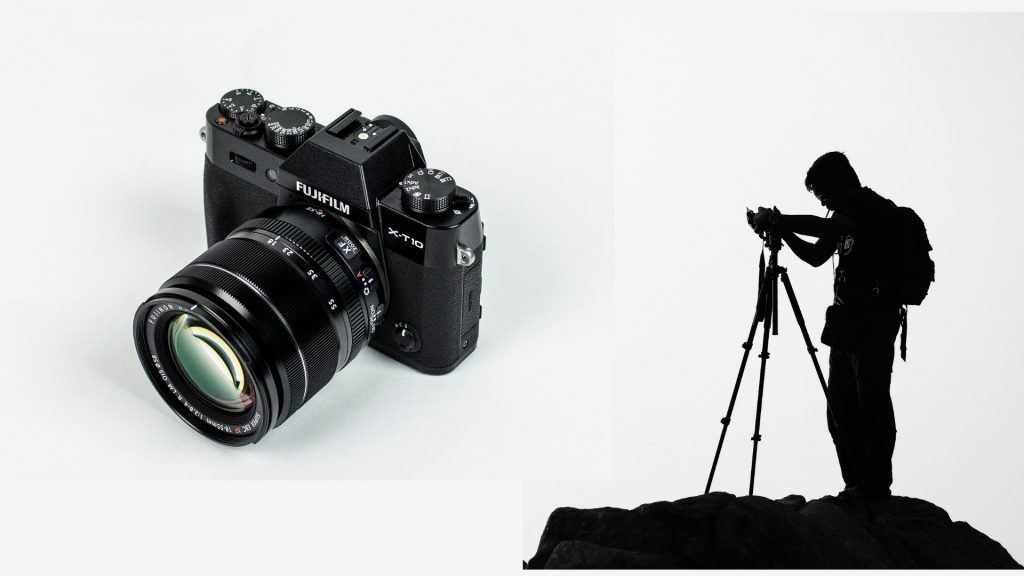In this article, we’ll dive into advanced camera techniques every photographer should know. These techniques will help you unlock the full potential of your equipment and creativity.

Photography is more than just pointing a camera and pressing the shutter button. It’s about understanding light, mastering composition, and leveraging advanced techniques to turn ordinary scenes into extraordinary images. Whether you’re an aspiring professional or a passionate hobbyist, learning advanced camera techniques can elevate your photography skills to a professional level.
Camera Features Every Photographer Should Know
Before delving into specific techniques, it’s essential to understand some advanced camera features that are crucial for creating stunning photos:
Manual Mode (M):
- Full control over aperture, shutter speed, and ISO.
- Best for creative and challenging lighting scenarios.
RAW Shooting:
- RAW files retain all image data, offering flexibility in post-processing.
- Ideal for editing exposure, color balance, and dynamic range.
Custom White Balance:
- Adjust color tones to match the light source.
- Perfect for achieving accurate colors in mixed lighting conditions.
Metering Modes:
- Spot Metering: Measures light at a specific point in the frame.
- Matrix Metering: evaluates the entire scene for balanced exposure.
- Center-Weighted Metering: prioritizes the center of the frame.
Focus Modes:
- Single Point AF: Focus on a specific point in the frame.
- Continuous AF: tracks moving subjects.
- Manual Focus: Full control for precision.
Mastering Composition Techniques
While basic composition rules like the rule of thirds are valuable, advanced composition techniques can transform your images into compelling visual stories.
Long Exposure Photography
Long exposure is a technique where the shutter is left open for extended periods to capture motion or light trails.
Applications of Long Exposure:
- Light trails: capture car lights on busy streets.
- Milky Way Photography: Show the movement of stars.
- Smooth Water: Create a silky effect on rivers, waterfalls, or oceans.
- Cloud Movement: Convey motion in the sky.
How to Achieve It:
- Use a tripod to stabilize the camera.
- Set your shutter speed to several seconds or minutes.
- Use a remote shutter or timer to prevent camera shake.
- Reduce ISO to avoid noise.
- Use neutral density (ND) filters to limit light in bright conditions.
Pro Tip: Experiment with bulb mode for exposures longer than 30 seconds.
High Dynamic Range (HDR) Photography
HDR photography involves merging multiple exposures of the same scene to retain detail in both shadows and highlights.
Steps for HDR Photography:
- Take three or more shots of the same scene at different exposure levels (underexposed, properly exposed, overexposed).
- Use HDR software like Adobe Lightroom or Photoshop to blend the images.
- Adjust contrast, saturation, and highlights to achieve a natural look.
Ideal Situations for HDR:
- Sunrise and sunset scenes.
- High-contrast interiors with visible windows.
- Landscapes with bright skies and dark foregrounds.
Macro Photography
Macro photography captures extreme close-ups of small subjects like insects, flowers, and textures.
Essential Gear:
- Macro Lens: Offers a 1:1 magnification ratio.
- Extension Tubes: An economical way to reduce the lens-to-subject distance.
- Ring Light or Flash: Provides consistent lighting for close-up subjects.
Tips for stunning macro shots:
- Use manual focus for precision.
- Shoot with a narrow aperture (f/8–f/16) for greater depth of field.
- Stabilize your camera with a tripod to minimize movement.
- Invest in a focus rail for stacking images.
Panning for Motion Blur
Panning is a technique used to capture sharp subjects against blurred backgrounds, emphasizing motion.
How to Pan:
- Set a slow shutter speed (e.g., 1/15 to 1/60 seconds).
- Focus on your subject and move the camera horizontally to match its speed.
- Keep the subject centered in your viewfinder as you shoot.
Ideal Scenarios:
- Car races.
- Cyclists or runners.
- Birds in flight.
Pro Tip: Practice smooth hand movements to improve results. This is an Advanced Camera Techniques Every Photographer Should Know
Focus Stacking for Enhanced Depth of Field
Focus stacking is used to achieve sharpness across an entire scene, particularly in macro and landscape photography.
Steps for Focus Stacking:
- Take multiple shots of the same scene, each focused on a different part.
- Use software like Helicon Focus or Photoshop to merge the images.
- Adjust settings to maintain natural transitions between focus areas.
Best Situations for Focus Stacking:
- Product photography.
- Macro shots with intricate details.
- Landscapes with foreground and background elements.
Double Exposure Photography
Double exposure combines two images to create a unique artistic effect.
How to Create Double Exposures:
- Use your camera’s multiple exposure mode, if available.
- Take the first image (often a silhouette or subject).
- Capture the second image (textures, landscapes, or patterns) to overlay.
- Experiment with opacity and blending modes during editing.
Creative Ideas:
- Combine portraits with nature elements.
- Overlay cityscapes with starry skies.
Using Flash Creatively
Flash photography isn’t just for dark environments. It can be used creatively to shape light, freeze motion, or add drama.
Off-Camera Flash:
- Place the flash away from the camera to create dynamic lighting angles.
- Use light modifiers like softboxes or reflectors for softer effects.
Rear Curtain Sync:
- Fires the flash at the end of the exposure.
- Ideal for capturing motion trails behind moving subjects.
Fill Flash:
- Balances harsh shadows in outdoor portraits by adding a soft burst of light.
Advanced Night Photography
Night photography presents challenges with low light but can result in breathtaking images when done correctly.
Techniques for Night Shots:
- Use a tripod: essential for long exposures.
- Open the aperture: Use wide apertures (e.g., f/2.8) to let in more light.
- Increase ISO: Boost ISO only if necessary, and reduce noise in post-processing.
- Shoot in Manual Mode: gives you full control over exposure settings.
Examples:
- Star trails using long exposures.
- Urban cityscapes with glowing neon lights.
- Moonlit landscapes with detailed foregrounds.
Post-Processing Techniques
Advanced photography doesn’t stop at capturing the shot; editing plays a significant role in refining your images.
Key post-processing tips:
- Adjust Exposure: Fine-tune brightness and shadows.
- Crop for Composition: Enhance framing to follow composition rules.
- Color Grading: experiment with tones for creative effects.
- Sharpen Details: Enhance textures and edges without overdoing it.
- Remove Noise: Use software like Lightroom for cleaner images.
Conclusion
Mastering Advanced Camera Techniques Every Photographer Should Know requires practice, patience, and creativity. By understanding your camera’s advanced features and exploring techniques like long exposure, HDR, macro, and panning, you can create stunning images that stand out. Remember, photography is as much about the story you tell as it is about technical expertise.
Keep experimenting with these techniques, study your results, and refine your skills. With time and dedication, you’ll not only become a better photographer but also develop a unique style that sets you apart. Happy shooting!
CHECK THESE OUT:
Best Smartphone Photography Accessories for Stunning Shots
Which Nikon Camera is Best for Wedding Photography?
Best Canon Camera for Professional Photography
Transform your Photography with the ULANZI CL-004 Phone Fisheye Lens
Enhance your Photography with the Evil Eye 36X Telephoto Lens for Just $69.99
